About floor layouts
Introducing the flow to move!
About floor layouts
Introducing the flow to move!
Difference between an apa-to and mansion
An “apa-to” is a multi-family dwelling that generally is a low-rise building made with a wooden or light-steel frame construction. These are also called “haitsu” or “ko-po” in Japanese.
A “manshon” is generally a larger multi-family dwelling made with a reinforced concrete construction.
Reading floor layouts
In Japan, floor layouts are expressed using such terms as "2LDK."
Room Layout (madori)
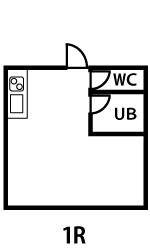
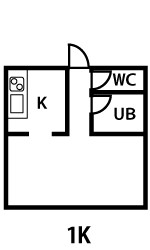
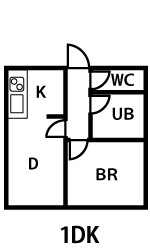
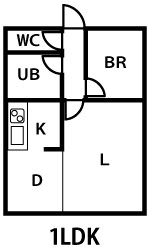
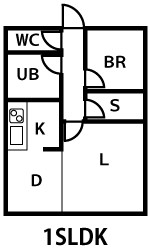
L = Living Room, D = Dining Room, K = Kitchen, S = Storage Room
1R = An apartment with a main bedroom that is not separated from the kitchen.
1K = An apartment that has a main room and a distinctly separated kitchen.
1DK= one bedroom, dining room, and kitchen.
1LDK= one bedroom, living room, dining room, and kitchen.
1SLDK= one bedroom, living room, dining room, kitchen, and storage room
The meaning of “LDK” and “DK” are almost the same. There are no set rules regarding the differences between them. Anyway, most DK is about 10m2. It may called “LDK” if the room size is over 13m2. Sometimes, there are small LDKs.
Room size units(Jo, Tsubo)
The units used to show the size of a residence include "Jo" and "Tsubo," which are unique to Japan, in addition to square meters(m2).
"Jo" is the size of tatami mat and is approximately 180 cm × 90 cm (there are some tatami mats that are smaller than this). This unit is used to show the size of a room. It is also written as (畳)
"Tsubo" is used to express the size of land. 1 tsubo is approximately 3.3㎡.
Difference between Japanese-style room with (和室) and Western-style (洋室)rooms
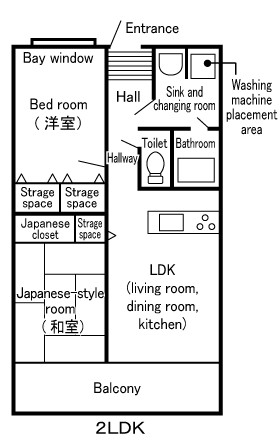
(和室) is a Japanese-style room with tatami mats on the floor.
(洋室) is a room with flooring or carpet on the floor.
Bathroom in Japan
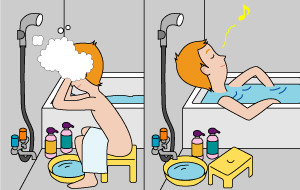
Generally, bathrooms in Japan have a separate washing area from the bathtub.
The bathtub is only used to hold hot water and washing of the hair or body is done outside of the bathtub in the washing area. First rinse off all of the shampoo and soap before soaking in the bathtub.
If more than one person will take a bath, the hot water in the bathtub is not drained and can be used as is for the next person.
Japanese-style toilets
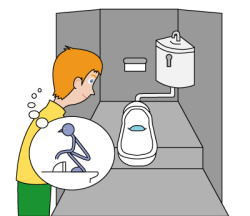
When using a Japanese-style toilet, squat facing the doomed part.
Wearing shoes in the house is prohibited
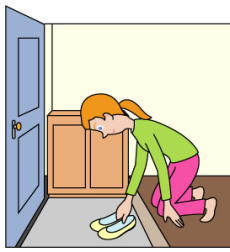
Japanese houses have a step up from the entrance to the hall or room. Shoes are removed in the rest of the house. In Japan, people sit directly on the floor or on a cushion placed on the floor. So be sure to remove your shoes in the entrance. You must not enter the rest of the house with your shoes on.
Bicycle parking space
Line up your bicycle in an orderly fashion in the designated area, such as a bicycle parking space. When there are rules, such as affixing a special sticker to the bicycle, these rules must be followed. For automobiles, a parking space must be acquired (there is often a charge for parking spaces). You must not park in even empty spaces in a parking area unless you have been given the right to park there (rented the space, etc).
Rent Life Shin-Yokohama Branch, Dai-Ni Kaede Blgd. 6F, Shin-Yokohama Kohoku-ku, Yokohama-shi, Kanagawa,222-0033 Japan
TEL:045-470-3214 (from Japan) +81-45-470-3214(from overseas)